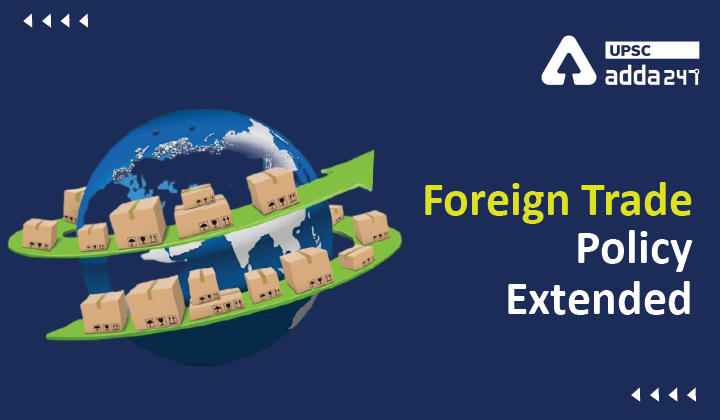Table of Contents
Foreign Trade Policy UPSC: Relevance
- GS 2: Government policies and interventions for development in various sectors and issues arising out of their design and implementation.
Foreign Trade Policy : Context
- Recently, the Ministry of Commerce and Industry has further extended the existing Foreign Trade Policy (FTP) till September 30, 2022.
- Read about record export growth from India.
Foreign Trade Policy 2015: Key points
- On March 2020, the government had extended the Foreign Trade Policy 2015-20 for one year till March 2021, amid the coronavirus outbreak and the lockdown.
- The FTP 2015-2020, which came into force on 1 April 2015, was originally meant for 5 years.
What is Foreign Trade Policy?
- Foreign Trade Policy is a set of guidelines and instructions established by the DGFT (Director General of Foreign Trade) in matters related to the import and export of goods in India.
- The foreign trade policy is regulated by foreign trade (development and regulation), Act 1992.
- Focus area: FTP primarily focuses on adopting a twin strategy of promoting traditional and sunrise sectors of exports including services.
Objectives of foreign trade policy
- To boost the economy by facilitating international trade of India.
- To improve the balance of payment and trade of India.
- To enhance the trading activities and generate a workforce environment to increase employment in the country.
- To provide consumers with goods and services of utmost quality and with effective cost.
- To raise the infrastructure of small-scale industries to reduce the trade imbalance in the country.
- To establish an advance licensing system to allow duty-free imports.
- To remove the restrictions on goods and services, and allow them to be freely imported.
- Digitalization of all the documents to reduce conflict between exporters and DGFT.
- Ease of access to credits by the start-ups and increasing limits.
- Canalization of import goods to diversifying market opportunities.
Features of FTP 2015-20
- It introduced a new scheme, “Merchandise Exports from Indian Scheme (MEIS)” and “Services exports from India scheme (SEIS)”.
- Merchandise exports from India (MEIS) to promote specific services for specific FTP.
- The ‘Services Exports from India Scheme’ (SEIS) is for increasing exports of notified services.
- The MEIS scheme provides rewards to exporters to offset infrastructural inefficiencies and associated costs.
- Reduced export obligation to 75% under the EPCG (Export Promotion Capital Goods) scheme.
- Duty credit scrips are freely transferable and usable for payment of customs duty, excise duty and service tax.
Read current affairs for UPSC





 TSPSC Group 1 Question Paper 2024, Downl...
TSPSC Group 1 Question Paper 2024, Downl...
 TSPSC Group 1 Answer key 2024 Out, Downl...
TSPSC Group 1 Answer key 2024 Out, Downl...
 UPSC Prelims 2024 Question Paper, Downlo...
UPSC Prelims 2024 Question Paper, Downlo...




